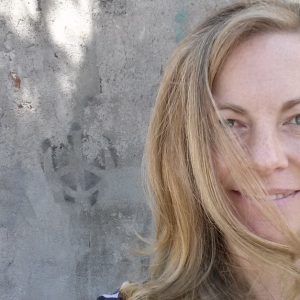TMO Background Mode Encore #4 Interview with Science Communicator Dr. Kiki Sanford
Dr. Kiki Sanford is a neurophysiologist, a popular science communicator and creator of This Week in Science (TWIS) podcast and radio show. This is her fourth appearance here. In this episode, we chat about some some very interesting recent topics on TWIS. 1) Researchers showed that mini human brains implanted into mouse brains survived and functionally integrated into the host tissue. 2) Magnetoreception in birds is possible thanks to a protein in their eyes. They may actually have a heads-up display in their eyes for the Earth’s magnetic field. 3) Amazon’s announcement of its Vesta family robot project. 4) A new, non-invasive patch is being developed to allow diabetics to monitor their gluscose levels. Kiki has a special way of inspiring us to learn about science, so don’t miss BGM’s most popular guest.
Show Notes

My Background Mode interview with Dr. Kiki Sanford (#4)
- Kiki on Twitter.
- Kiki's About Me page.
- This Week in Science.
- Kiki's Wikipedia bio.
- Dr. Kiki's first appearance on BGM.
- Dr. Kiki's second appearance on BGM.
- Dr. Kiki's third appearance on BGM.
- Support TMO when you buy your Apple gear from Apple.
- The story of my Background Mode podcast.
- TMO Background Mode Twitter feed.
- Archive of all Background Mode Shows.
- Background Mode at iTunes.
- Send your comments to [email protected] or [email protected]

John,
Great interview with Kiki, as always, but I do have one minor quibble … in your discussion with her about the air dryer versus paper towels, you kind of criticized those institutions that choose to only have the air dryers.
However, unless I misheard something, Kiki never said that paper towels were more environmentally friendly than air dryers (that would depend very heavily on where the electricity to power them comes from … kind of like how a plug-in car isn’t a great choice if the electrons are coming from a coal plant!) … she only said that paper towels are better for not spreading germs.
There’s a big difference in the two, obviously. I’d like to see an analysis of the total environmental cost of cutting down trees versus powering air dryers. Thanks!
Old UNIX Guy